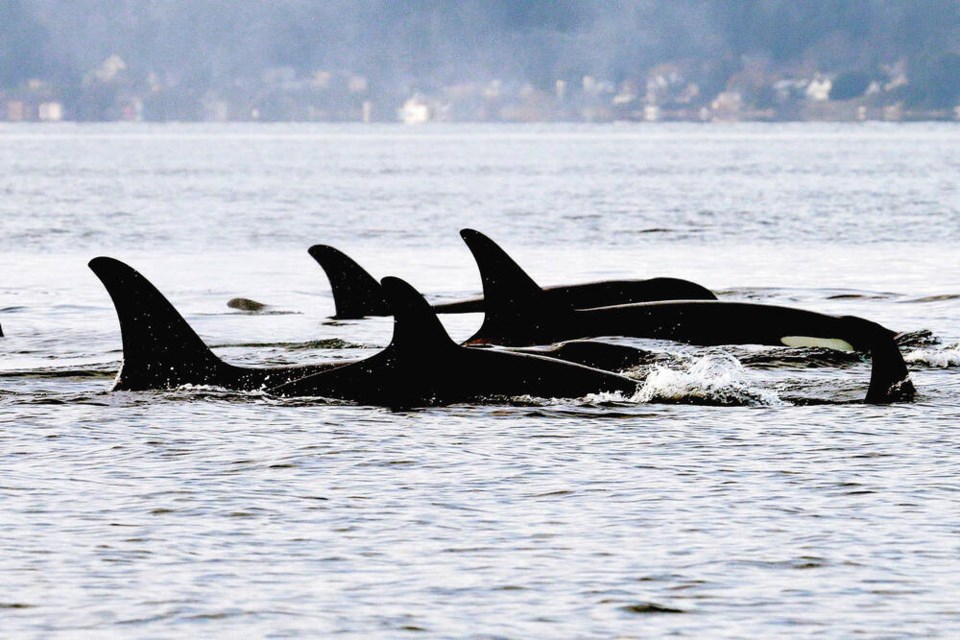The decline of the endangered southern resident killer whale population continued during the past year, according to the most recent census by the Center for Whale Research.
The centre, located on San Juan Island in Washington state, has completed an annual census of the orca population since 1976. This year’s report, completed for the National Marine Fisheries Service, shows the orca population declined from 74 on July 2021 to 73 as of July 1, 2022. Researchers found there were three deaths — including an entanglement — and two healthy births.
The southern resident killer whales are a large extended family or clan composed of three pods — J, K and L.
The census marks the lowest number of L pod members — 32 — since the study began. With only 16 members, K pod has its fewest members in the last two decades. J pod has 25 members.
The report says two members of K pod died during the past year. K21 was last seen in late July 2021 in Juan de Fuca Strait. He was severely emaciated. When he failed to be seen with his “social associates,” he was declared dead. K44 also died. Researchers know he was alive in late April 2022. However, he was not seen again with his family.
“The body of a juvenile male killer whale, matching K44’s size and with markings consistent with a southern resident, was found entangled off the Oregon coast in late June, however, a lack of further photographs or biological samples prevents a definitive ID,” says the report.
L89 was last seen in late 2021 and was not seen again in 2022 despite repeated sightings of his mother and social group.
J pod, the pod most likely to appear year-round in the waters of the San Juan Islands and Southern Gulf Islands and th Strait of Georgia, saw J37 give birth to her second offspring J59 in February. In May, researchers at the centre were able to determine J59 is a female.
K2o had her second calf in April. The sex of the calf is not known, says the report.
“Both calves appeared healthy in recent observations.”
In the mid-90s, the southern resident killer whale population peaked at 98 animals, says the report. By 2001, the population had declined to 78 whales.
The count will be updated again on Dec. 31.



